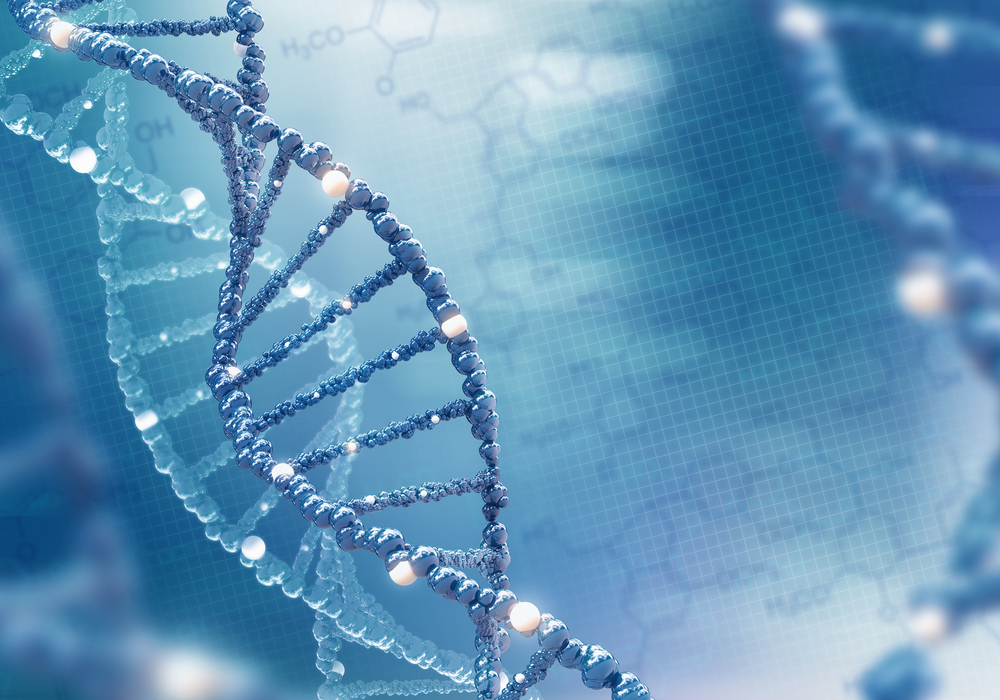Microdystrophin Gene Therapy Improves with nNOS Domain, Review Study Says

A review study highlights the benefits of adding an extra protein domain — called neuronal nitric oxide synthase (nNOS) — to microdystrophin gene therapy.
nNOS is an important player in regulating blood flow to muscle cells, and the reviewed evidence suggests it protects muscle against restricted blood flow (a condition called ischemia), damage, and fatigue.
“Evidence indicates that the nNOS domain is a critical component of dystrophin and may be required for normal protein function,” Carl Morris, PhD, chief scientific officer at Solid Biosciences and the review’s senior author, said in a press release.
The company is currently assessing its investigational gene therapy SGT-001, which includes the nNOS domain, in the Phase 1/2 IGNITE DMD trial (NCT03368742). Patient recruitment is ongoing.
The review “Membrane recruitment of nNOSμ in microdystrophin gene transfer to enhance durability” was published in the journal Neuromuscular Disorders.
In Duchenne muscular dystrophy (DMD) and a milder variant, Becker muscular dystrophy (BMD), mutations in the DMD gene cause a defective, or total lack of, the muscle protein dystrophin, resulting in muscle degeneration.
Dystrophin is a so-called large protein, so administering a synthetic (lab-made) dystrophin protein to patients is not a viable therapeutic option.
Ask questions and share your knowledge of Muscular Dystrophy in our forums.
The alternative is to use genetics to deliver a synthetic DNA that encodes information for the cell to make a smaller dystrophin protein called microdystrophin. This external DNA is inserted into muscle cells by modified adeno-associated virus (AAV) that do not cause infection and are safe for patients.
However, it is crucial to understand which dystrophin protein regions or domains should be selected for making the therapeutic microdystrophin. Clinical findings in BMD patients suggest that a milder disease phenotype with no muscle weakness is associated with the expression of 30% to 60% of dystrophin, as assessed by muscle biopsy. Other studies support that nNOS domain is essential to regulate the nitric oxide (NO) signaling in muscle cells.
NO signaling is used by muscles to control its development, blood supply, metabolism, force, resistance to fatigue, inflammation, and even fibrosis (scar tissue formation). The nNOS located in the cell membrane is responsible for maintaining a good blood flow to the muscle, a process known as sympatholysis. nNOS produces the NO molecule that sends a signal to increase blood supply needed when the muscle is activated.
When dystrophin is defective, nNOS protein levels are reduced and it is no longer transported to the membrane. Without membrane nNOS, the muscle is not able to recruit more blood supply leading to ischemia, edema and death of muscle fibers.
Previous studies have tried to increase NO signaling in order to promote better muscle blood supply. However, results showed that increasing NO was not enough to change disease progression.
Now, researchers believe that adding an nNOS domain into microdystrophin therapy could be the answer to recover NO signaling in affected muscle.
Studies done in BMD patients who carried mutations on nNOS domain, showed that mutated nNOS domain lead to nNOS mislocalization and impaired blood vessels control, while patients with intact nNOS domain had fewer symptoms.
“Literature generally suggests that inclusion of the nNOS domain in BMD subjects results in a milder phenotype when compared to patients lacking the domain,” researchers wrote.
Currently, microdystrophin gene therapy is being tested in three clinical trials — NCTT03362502, NCT03375164, and the IGNITE DMD trial (NCT03368742), which is assessing Solid Biosciences’ SGT-001, which provides instructions to create microdystrophin with an nNOS domain.
The open-label IGNITE DMD study is testing the safety, effectiveness, and tolerability of a single intravenous (IV) infusion of SGT-001 in ambulatory children and non-ambulatory teenagers, ages 4 to 17. Effectiveness will be evaluated by testing for microdystrophin production through muscle biopsy samples.
Preliminary results have shown that the gene therapy is well-tolerated, with signs of microdystrophin production in patients’ muscles after three months of treatment.
“Our AAV9-based microdystrophin gene therapy development candidate, SGT-001, is unique in that it includes the functional nNOS domain, and our development program will assess potential nNOS-related clinical benefits, including diminished muscle fatigue and protection against ischemic [restricted blood flow] muscle damage, which can lead to loss of functional muscle,” said Solid Biosciences’ Morris.
“We look forward to continuing to evaluate the clinical profile of SGT-001 in the ongoing Phase 1/2 IGNITE DMD trial in patients with DMD,” he said.
“As patients begin to express microdystrophin, the hope is that muscle function will stabilize or perhaps even improve. Given these potential increases in muscle activity, it becomes important to preserve and protect microdystrophin expressing fibers. Inclusion of the nNOS domain may help to maintain microdystrophin positive fibers for a longer period of time,” the study concluded.






